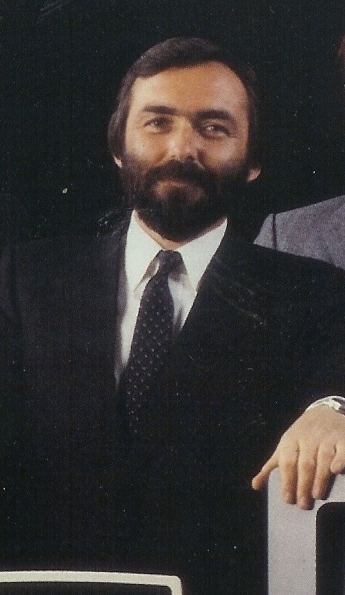Name David Pearson | ||
 | ||
David Pearson is a British physicist and computer scientist. He has degrees in physics and theoretical physics from London University and Imperial College of Science and Technology, and in computer science from the University of Cambridge, where he did his postgraduate research. He is an Associate of the Royal College of Science. He joined International Computers Limited in 1968 and became Head of Software Engineering, responsible for CADES, the development system for the ICL 2900 Series Operating System and one of the earliest comprehensive systems software engineering development environments. After spending four years as Director of Advanced Development for Bell-Northern Research in Ottawa and Palo Alto California he became the founder and President of Orcatech, one of the world's first intelligent graphics workstation companies. He went on to become the founding Chief Executive of the Strathclyde Institute in Glasgow, Scotland, Senior Director of Scottish Enterprise and Chief Executive for the economic development agency for Norfolk and Waveney. Before moving back to Canada, he spent three years as Chief Operating Officer of the Industrial Society, later to become the Work Foundation. He has Canadian and British citizenships.
Contents
- ICL CADES
- Bell Northern Research Laboratories
- Orcatech Inc
- The Strathclyde Institute
- Economic development
- References
ICL CADES
Pearson started his career at International Computers Limited. He was involved in the early development work of the VME/B operating system for ICL’s 2900 Series. He was the innovator and architect of the CADES software engineering system that was the foundation of VME/B development activities for over 20 years, and he led its development team until 1977.
In designing the initial architecture of the CADES environment, Pearson in particular looked to parallels with the leading hardware computer-aided design systems of the time, even attempting the use of graphics in the design process. CADES was one of the first effective software engineering environments to be used for the development of large-scale software. After 30 years, the system was still in use by Fujitsu to maintain the ICL operating system.
Bell-Northern Research Laboratories
At the end of 1977, Pearson moved to Bell-Northern Research Laboratories in Ottawa, Canada, as Director of the laboratory's Advanced Development teams in Palo Alto, Raleigh NC and Ottawa.Whilst at BNR his primary focus was on leading research programmes working on heuristic design and development technologies for Northern Telecom digital communications products.
His key research programmes included artificial intelligence techniques applied to dense electronic designs, a virtual graphics machine global standard, software engineering techniques for high-performance Digital Multiplex System products, and computer-aided design strategies for locally intelligent products.
During this time he was a science and technology adviser to the Canadian government and served as a member of the Science and Engineering Research Council for Canada.
Orcatech Inc
In 1981, with a small number of BNR colleagues, Pearson left to found Orcatech Inc., one of the first companies specialising in the design and development of high resolution intelligent graphics workstations for the computer-aided engineering market. In the early 1980s, the availability of bit-slice and 16-bit microprocessors started to revolutionise high resolution computer graphics terminals which now increasingly became intelligent, semi-standalone and standalone workstations. Graphics and application processing were increasingly migrated to the intelligence in the workstation, rather than continuing to rely on central mainframe and mini-computers. The Orca 3000 was based on Motorola 68000 and AMD bit-slice processors and had Unix as its operating system. It was targeted squarely at the sophisticated end of the design engineering sector and included General Motors, Nortel, Boeing and Lockheed as clients. After developing a portfolio of successful workstation products and a rich portfolio of blue-chip clients, Orcatech went public on the Toronto Stock Exchange in 1983 at a valuation of over $100m, at that time one of the highest valued young technology companies ever to go public on the TSX.
The Strathclyde Institute
In 1986 Pearson moved back to the UK to become the first Chief Executive of the Strathclyde Institute, a research and consultancy company focusing on computer-based manufacturing systems and based in Glasgow, Scotland. In establishing the Institute, Pearson's partners were the Scottish Development Agency, Hewlett Packard, Group Bull and Honeywell. During his six years as Chief Executive, the Institute advised some of the world’s leading companies in the areas of computer engineering, jet engine manufacture, automotive assembly, food and beverage processing, chemicals and pharmaceuticals. He was also the author of one of the definitive guides to Computer Integrated Manufacturing, published by the Financial Times. Concurrently, Pearson was also Professor in Management at Strathclyde University in Glasgow and a government adviser on company startup policy, seed funding and operations.
Economic development
In 1993 Pearson became Senior Director of Scottish Enterprise, the national body responsible for the economic development of Scotland.
After three years with Scottish Enterprise, Pearson took over as Chief Executive of the Norfolk and Waveney Enterprise Partnership, the economic development agency for East Anglia. Pearson also served as a member of the University of East Anglia Senate during this period.
At the beginning of 2000, he was appointed Director and Chief Operating Officer of the Industrial Society, one of the world's oldest and most respected think tanks, later to become The Work Foundation, where he advised the private and public sectors on compliance, growth and employment futures. He retired in February 2003.
On retiring from the Work Foundation, he moved to British Columbia, Canada, where he served the local boating community as Canadian Power and Sail Squadron Training Officer and Squadron Commander for a number of years. He continues to enjoy writing, collecting cars and early Baroque music.
